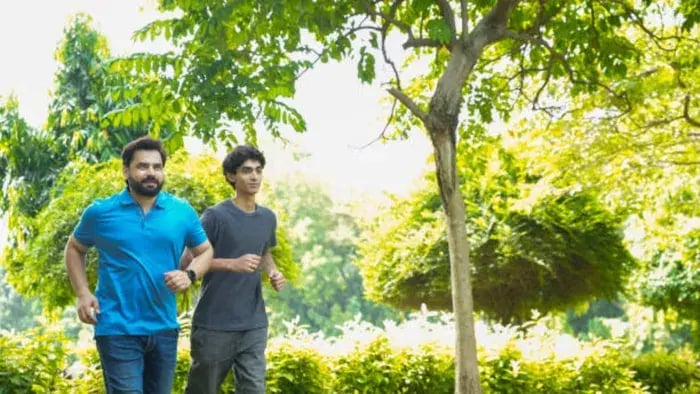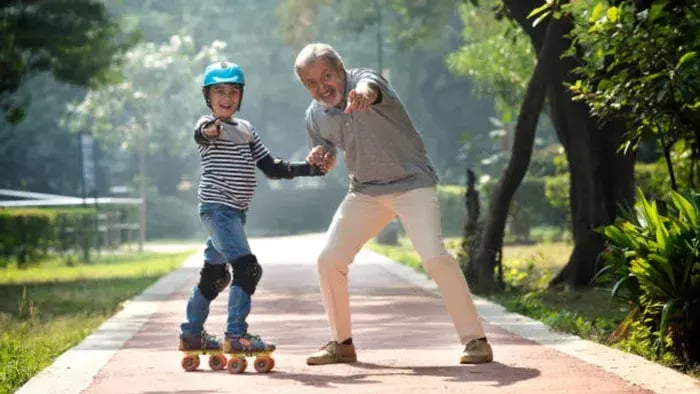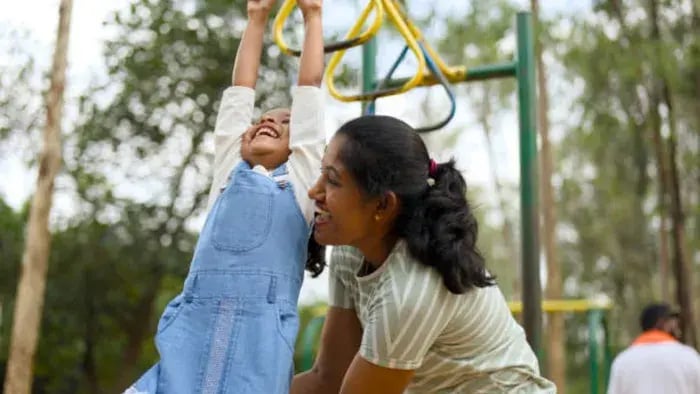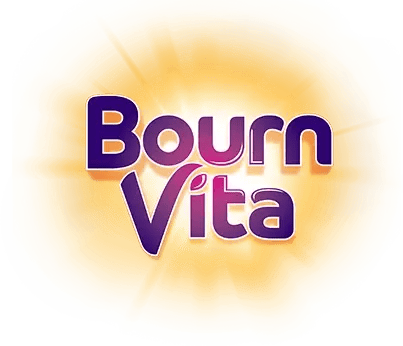- Toddlers (1–3 years)
- Preschoolers (4–5 years)
- Early Primary (6–8 years)
- Upper Primary (9–11 years)
- Preteens (12–13 years)
- Teens (14–16 years)
- All Ages
Introduction

Physical fitness is often misunderstood as just being slim or good at sport. But it’s about how your body moves, builds strength, has energy and bounces back after a long day. And what it means to be “fit” changes as you grow. A toddler in the park, a teen cycling to school and an adult balancing work and family all need different types of movement and support to be physically fit.
For younger kids, physical fitness starts with mastering basic movements, running, hopping, and climbing stairs, things that look simple but are key to strength and balance. As they get older, fitness starts to support posture, energy levels and even focus in class. By the time they hit their teenage years, being active plays a much bigger role in shaping confidence, emotional health and long-term habits.
Even adults and older family members benefit from the same foundation, though their fitness may focus more on flexibility, joint support and endurance for daily activities. The goal at every age is to move well, feel strong and be active, not to meet a number on the scale. The more physical activity is built into daily routines the easier it is to maintain for life.
7 Age-Wise Insights into Physical Fitness: Understanding Fitness Needs Across Different Ages

Physical fitness means different things at different stages of life. For children, it’s about building strong muscles and coordination. For teens, it includes stamina, flexibility, and confidence. For adults and older adults, it’s more about energy, posture, and long-term wellness. The key is not to push for perfection, but to help your body function well and feel good, at any age. From toddlers to teens, each phase has its own fitness needs, and knowing what to focus on can make all the difference.
Here are 7 age-specific breakdowns that explain what physical fitness should ideally support at every stage of growing up.
Toddlers (1–3 years)
At this age, fitness is all about movement and exploration. According to Wiley Interdiscip Rev Cogn Sci. 2018, crawling, climbing, jumping, and running help toddlers build balance and coordination. These small yet constant movements improve bone strength and develop motor skills. You don’t need structured exercises, just free play, soft surfaces, and safe spaces are enough to help their growing bodies stay active.
Preschoolers (4–5 years)
Preschoolers are constantly on the move. As per the study published in, Med Sci Sports Exerc. 2016, physical fitness here supports coordination, spatial awareness, and muscle control. Dancing, cycling, skipping, or even playing catch helps channel their high energy in a productive way. Short bursts of activity through the day are more effective than one long session. This stage sets the foundation for active habits later in life.
Early Primary (6–8 years)
This age group benefits from structured activity but still thrives on fun. According to The National Institute Of Aging, fitness helps with posture, body control, and flexibility. Simple team sports, yoga, or dance lessons introduce discipline and rhythm. Activities that involve jumping, climbing, and stretching improve core strength and stamina while also helping kids stay focused and happy at school.
Upper Primary (9–11 years)
Kids at this age experience rapid physical and emotional growth. ccording to The National Institute Of Aging, their bodies need strength-building activities like running, swimming, or basic strength training using body weight (like planks or wall sits). Fitness also helps manage mood swings and enhances sleep quality. Focus on variety and consistency rather than intensity to avoid burnout or pressure.
Preteens (12–13 years)
Study published in, National Academies Press 2013 shows that fitness during preteen years helps build endurance and encourages better posture as bodies grow taller and heavier. This is a good time to include strength-building routines like yoga, light resistance work, or core-focused exercises. Balance activities, like skating or martial arts, can help with both coordination and confidence.
Teens (14–16 years)
According to a study published in, Sports Health. 2009, teenagers benefit from more adult-like fitness routines. They’re capable of handling workouts like resistance training, cardio sessions, or sports drills. The goal is not just physical health but stress relief, better concentration, and emotional balance. Encourage fitness that they enjoy, it can be dance, running, or gym workouts, so that they stick to it.
All Ages
No matter the age, fitness should always feel approachable. Walking, stretching, dancing, or even gardening, all count. Families that stay active together build long-lasting health routines. The goal is to stay consistent, feel energetic, and enjoy the movement instead of forcing it.
Conclusion

Understanding what physical fitness means at each age helps you support your child better and care for your own body too. It’s about helping every family member find activities that make them feel strong, balanced, and motivated, day by day. Physical fitness grows with you, so let it be gentle, joyful, and part of everyday life.
Her love for storytelling began with reading her grandfather’s speeches, where Tarishi saw the power of words in creating lasting memories. Combining her passions for food and writing, she has turned her life into a fulfilling path of sharing stories that celebrate flavours and how food brings communities together.
The views expressed are that of the expert alone.
The information provided in this content is for informational purposes only and should not be considered a substitute for professional medical advice, diagnosis, or treatment. Always seek the advice of your physician or another qualified healthcare provider before making any significant changes to your diet, exercise, or medication routines.
References
https://pmc.ncbi.nlm.nih.gov/articles/PMC3445252/
https://www.ncbi.nlm.nih.gov/books/NBK201497/
















